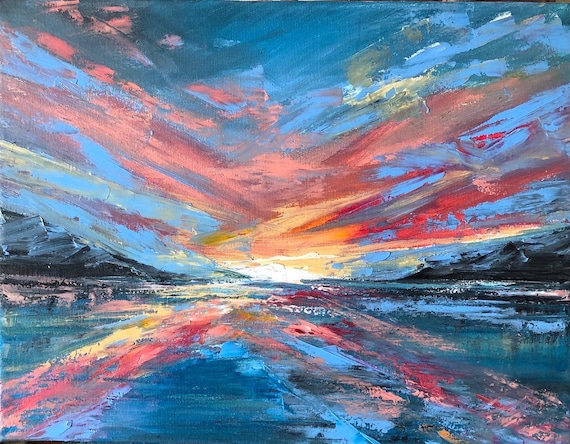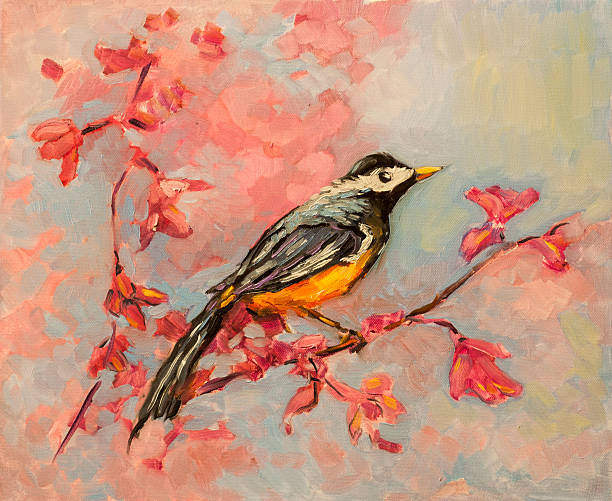Oil Paintings for Sale Featuring Celebrated Global Artists
Oil Paintings for Sale Featuring Celebrated Global Artists
Blog Article
Checking out Everything About Oil Paints: A Guide to Comprehending Their Elegance and Value
Oil paints have astounded audiences for centuries, providing a peek right into the creative proficiency of numerous ages. Their abundant history is intertwined with innovative techniques and profound psychological expression. Comprehending the materials and approaches behind these artworks can improve appreciation. In addition, the market for oil paintings offers chances for collectors and financiers alike. As one discovers this fascinating globe, the concern emerges: what makes an oil painting genuinely valuable?
The History of Oil Paint: A Trip With Time
Although oil painting has roots that date back to old times, it absolutely thrived throughout the Renaissance, when artists uncovered its adaptability and rich shade capacity. Early instances can be mapped to the 7th century, with techniques advancing especially throughout societies. The medium ended up being noticeable in Northern Europe in the 15th century, specifically via the jobs of artists like Jan van Eyck, who pioneered its usage for comprehensive realism and vibrant colors. This duration noted a departure from tempera paints, enabling better depth and texture. As oil painting spread, it influenced plenty of musicians, resulting in work of arts by renowned figures such as Leonardo da Vinci and Rembrandt. The tool's heritage proceeds, forming the art globe well into contemporary times.
Recognizing Oil Paints: Products and Techniques
As musicians explore the world of oil paints, they experience a diverse variety of materials and techniques that define this medium. The main parts of oil paint include pigments, which provide shade, and drying out oils, such as linseed, that bind the pigments and facilitate application. Various additives can modify the paint's structure and drying time, improving versatility. Methods like glazing, where clear layers are accumulated, and impasto, which involves using thick paint, enable different visual results. Furthermore, using brushes, scheme blades, and also fingers can produce unique textures and finishes. Comprehending these products and strategies allows artists to totally reveal their creative thinking and accomplish the wanted impact in their artwork.
The Function of Color in Oil Paints
Color plays a critical function in oil paints, influencing both aesthetic appeal and psychological resonance. Understanding color theory essentials, consisting of the connections in between shades, can improve an artist's capability to communicate state of mind and environment. Additionally, mastering color mixing techniques permits for greater deepness and richness in a paint's palette.

Shade Theory Fundamentals
Recognizing color theory is essential for artists collaborating with oil paints, as it creates the foundation for creating visually interesting and harmonious structures. Color concept encompasses the research of just how colors engage, the shade wheel, and the connections in between primary, second, and tertiary colors. Artists make use of complementary shades to improve contrasts and produce prime focus, while comparable shades promote unity and cohesiveness within a piece. Additionally, the principles of warm and cool colors affect the perception of deepness and room in a paint. Comprehending these concepts enables artists to manipulate shade properly, leading the audience's eye and communicating their intended message. Mastery of color concept ultimately enriches a musician's ability to convey emotions and ideas through their job.
Psychological Impact of Shade
The psychological effect of color in oil paints plays an important function in exactly how customers link and view with art work. Shades stimulate certain sensations and state of minds, affecting the viewer's mood. For example, cozy tones like reds and oranges can develop a feeling of warmth and energy, while cool tones such as blues and environment-friendlies frequently evoke calmness or introspection. Artists strategically choose color palettes to enhance narrative components, leading the target market's psychological trip. The saturation and contrast of shades additionally magnify these results, attracting interest and developing focus. Inevitably, the interplay of shades in oil paints not only improves their aesthetic allure but additionally functions as a powerful tool for psychological expression, enhancing the viewer's experience and analysis.
Color Combining Techniques
While many aspects of oil paint add to the general make-up, grasping color mixing methods is crucial for accomplishing preferred impacts and depth. Shade mixing can be come close to with numerous approaches, consisting of the subtractive and additive procedures. Additive blending involves combining colors of light, while subtractive mixing depends on pigments, where shades mix to develop brand-new tones. Artists often use a restricted combination to develop harmonious jobs, comprehending the relationships between primary, second, and tertiary colors. Strategies such as glazing and scumbling even more improve deepness and luminance. By skillfully blending shades, a musician can evoke emotions, develop prime focus, and attain a feeling of realism, inevitably boosting the painting's visual and psychological influence.
Famous Oil Painters and Their Iconic Functions

Well known for their proficiency of shade and method, oil painters have actually developed a few of the most renowned artworks in background. Popular artists like Vincent van Gogh mesmerized target markets with his stirring brushwork in "Starry Night," while Claude Monet's "Perception, Dawn" prepared for Impressionism. Leonardo da Vinci's "Mona Lisa" continues to be a long-lasting icon of creative wizard, showcasing his skill in recording human expression. Rembrandt's "The Night Watch" shows his ingenious usage of light and darkness. Various other remarkable figures consist of Pablo Picasso, who transformed modern-day art with his vibrant trial and error in works like "Les Demoiselles d'Avignon," and Georgia O'Keeffe, whose vivid depictions of blossoms and landscapes assisted define American modernism. Each musician's one-of-a-kind design added greatly to the oil painting landscape.
Just how to Evaluate the Top Quality of an Oil Paint
Evaluating the top quality of an oil painting includes a cautious analysis of workmanship strategies, as well as an analysis of shade and make-up. Observing brushwork, layering, and the application of paint can reveal the musician's ability degree. Furthermore, the interplay of colors and the overall setup of elements add considerably to the painting's visual worth.
Examining Workmanship Methods
A meticulous evaluation of workmanship methods is important for identifying the high quality of an oil painting. Evaluators must initially examine the application of paint; thick, textured brushstrokes might recommend a skilled hand, while extremely consistent applications can indicate an absence of depth. oil paintings for sale. The layering technique is also crucial; the existence of lusters and differed thickness can improve luminance and complexity. Furthermore, the top quality of the products used, such as the canvas and pigments, plays a considerable function in toughness and total aesthetic. Interest to information in aspects like edges and shifts between colors mirrors the musician's dedication to their craft. Inevitably, these strategies add to the painting's psychological impact and market price, working as signs of the musician's ability and intent
Evaluating Color and Composition
While evaluating the high quality of an oil paint, one have to concentrate on the interplay of shade and composition, as these elements are fundamental to the art work's overall influence. Color choices can develop and stimulate emotions state of mind; therefore, the musician's palette need to be examined for harmony and comparison. A well-balanced composition routes the customer's eye and develops a feeling of unity. Musicians commonly employ techniques like the policy of thirds or leading lines to improve visual rate of interest. Additionally, using light and darkness can include deepness, improving the three-dimensionality of the paint. Ultimately, a successful oil paint weds color and composition, involving the audience and inviting a much deeper admiration of the musician's vision and technique.
Taking care of and Preserving Oil Paintings
Correct treatment and conservation of oil paints is essential for preserving their stability and long life. To safeguard these art work, it is essential to show them away from direct sunlight, which can cause fading and discoloration. Preserving a secure setting with regulated temperature and humidity additional help in stopping damages. Cleaning up need to be done carefully utilizing a soft, completely dry towel, preventing any type of rough chemicals that could damage the paint or varnish. Normal examinations for signs of damage, such as flaking or splitting, are suggested. When moving or saving oil paintings, appropriate extra padding and framework are required to stay clear of physical injury. Inevitably, attentive treatment contributes to the visual allure and worth of oil paintings gradually.
The Marketplace for Oil Paints: Investing and collecting
Recognizing the marketplace characteristics for oil paints is important for investors and collectors alike. The value of these artworks is affected by numerous aspects, consisting of the musician's track record, historic importance, and current patterns. Enthusiasts usually seek pieces that reverberate directly while thinking about possible appreciation in worth. Galleries and public auctions work as primary locations for trading, with rates varying based upon need and rarity. Purchasing oil paintings calls for research study into the market, along with an understanding of authenticity and provenance. In addition, emerging musicians may use opportunities for substantial returns, while established names can regulate high prices. On the whole, a calculated approach to gathering can yield here both visual satisfaction and economic benefits.

Often Asked Questions
What Are the Environmental Influences of Oil Paint Materials?
The ecological influences of oil painting materials include the launch of unpredictable natural substances (VOCs), dangerous waste generation, and resource extraction for pigments. These aspects add to pollution and ecological degradation, raising worries among eco aware musicians and customers.
Just How Do Various Canvases Influence Oil Painting Results?
Various canvases influence oil painting results significantly. Appearance, surface, and absorbency high quality can alter paint application, drying times, and color vibrancy. Musicians commonly choose specific canvases to achieve desired results and improve their artistic expression.
Can Oil Paintings Be Brought Back if Harmed?
If harmed, Oil paints can without a doubt be restored. Professional conservators use different techniques to repair rips, clean surfaces, and address staining, ensuring that the art work retains its original appeal and worth for future generations.
What Are the Indications of an Initial Oil Paint?
The indicators of an initial oil painting include visible brush strokes, texture variants, and an uneven canvas weave (oil paintings for sale). In addition, authenticity may be verified via provenance, trademarks, and the presence of a varnish layer distinct to oil mediums
Just How Has Innovation Influenced Modern Oil Painting Techniques?
Modern technology has actually substantially affected modern oil painting methods by introducing digital devices for planning, boosted products for texture and durability, and online platforms for marketing and sharing art, thereby broadening musicians' innovative opportunities and target market get to. Oil paint has roots that date back to old times, it truly flourished during the Renaissance, when musicians discovered its versatility and rich color potential. The psychological effect of shade in oil paintings plays an essential duty in exactly how viewers perceive and link with artwork. While many aspects of oil paint add to the general make-up, grasping shade mixing techniques is vital for attaining desired effects and deepness. Assessing the top quality of an oil paint entails a mindful analysis of workmanship methods, as well as an analysis of shade and make-up. While reviewing the top quality of an oil painting, one should concentrate on the interaction of color and structure, as these components are essential to the artwork's total impact.
Report this page